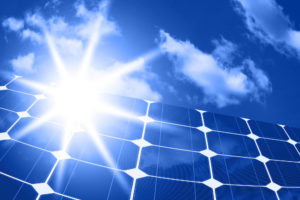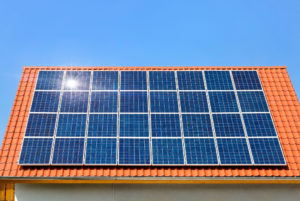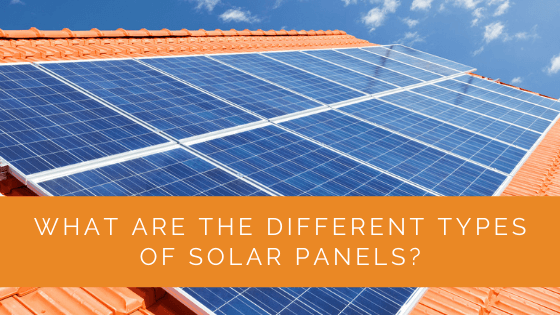Before you move on to the other comprehensive features of solar panels, you have to go through the hassle of picking a type. First-time solar panel buyers are generally in the dark about solar panel types.
Most domestic solar panels fit into three types – monocrystalline panels, polycrystalline panels, and thin solar film panels. However, there’s a fourth type, too – passivated emitter and rear cell panels.
This article will help you diversify your knowledge about different solar panel types. By the end of it, you’ll know which solar panel fits your requirement the best.
Contents
- 1 Key Takeaways
- 2 What Are the 4 Different Types of Solar Panels?
- 3 Do All Solar Panel Types Have Different Efficiency?
- 4 Do All Solar Panel Types Have Different Power Capacity?
- 5 Do All Solar Panel Types Have Different Costs?
- 6 What Should I Consider While Picking a Solar Panel Type?
- 7 Which Solar Panel Type Is Best for Home?
- 8 Case Study: Selecting the Right Solar Panel Type for a Residential Client
- 9 Expert Insights From Our Solar Panel Installers About the Different Types of Solar Panels
- 10 Experience Solar Excellence with Us!
- 11 Bottom Line – Which Solar Panel Should You Use?
Key Takeaways
- There are four main types of solar panels: Monocrystalline, Polycrystalline, Passivated Emitter and Rear Cell (PERC), and Thin Film. Each type has its own characteristics and cost considerations.
- Monocrystalline panels are highly efficient but costly to produce, while polycrystalline panels are more affordable but less efficient, especially in high-temperature regions. PERC panels offer higher energy collection, and thin-film panels are lightweight but less efficient.
- The choice of solar panel type should consider factors like efficiency, power capacity, cost, temperature tolerance, fire rating, hail rating, hurricane resistance, and light-induced degradation. Monocrystalline panels are recommended for residential use due to their efficiency and performance.
What Are the 4 Different Types of Solar Panels?
If you’ve surfed solar panels before, you must’ve come across terms such as ‘monocrystalline,’ ‘PERC,’ polycrystalline, etc. These are not mere terms but varieties of solar panels.
This section of the article sheds light on the four types of solar panels and all their features. Let’s get started!
Monocrystalline Solar Panels
Single-crystal panels are another name for monocrystalline panels. Interestingly, monocrystalline panels use a single pure silicon crystal cut into different wafers. Their dark black color is a notable feature in identifying a monocrystalline solar panel.
Most people claim that monocrystalline solar panels are space-efficient and most long-lasting among the other types. Well, the use of pure silicon lends such extraordinary features to monocrystalline solar panels.
However, producing monocrystalline solar panels also comes at the cost of wastage. Producing a single monocrystalline cell generates silicone waste. Also, it results in the monocrystalline solar panels having a costly price tag.
Polycrystalline Solar Panels
As the name suggests, polycrystalline solar panels use different silicon crystals, unlike monocrystalline panels. Manufacturers melt silicone fragments and pour them on a square mold.
Since there is minimal wastage, polycrystalline solar panels tend to cost much cheaper. You can identify a polycrystalline solar panel by its characteristic square shape.
Polycrystalline solar panels indeed offer a lacking performance in terms of space and energy conversion. It is because of the deficiency in the purity of the silicon.
Also, polycrystalline solar panels have poor heat tolerance. This characteristic makes them less efficient in high-temperature regions.

Passivated Emitter and Rear Cell Panels (PERC)
You can consider PERC solar panels as an improved version of conventional monocrystalline cells. PERC is a relatively modern technology that includes a passivation layer in the rear surface of the cell.
The best part about PERC solar panels is their higher solar energy collection despite their smaller footprint. This feature also makes PERC solar panels an ideal choice for compact spaces. Here’s why PERC solar panels are more efficient:
- It reduces the electron’s natural tendency to recombine and emit the flow of electrons in the entire system.
- PERCs reflect the light into the cells. This process improves the solar energy absorption rate in the cells.
- These solar panels can also allow the reflection of greater wavelengths of light. The passivation layer helps the panel to reflect higher wavelengths.
Also, they are generally costlier than the traditional panels because of the additional materials. However, their production procedure is similar, and the required materials are similar.
Thin Film Solar Panels
Like their name, the thin-film solar panels include fine layers that are very flexible. Unlike other solar panels, thin-film panels eliminate the need for frame backing. This structure makes them easier to install and exceptionally lightweight.
Crystalline silicon comes in standardized sizes. However, thin-film solar panels come in customized sizes. It’s also important to mention that thin-film solar panels are less efficient than other solar panel variants.
Thin-film solar panels do not use silicone. They use different materials to suit specific purposes. Below, you can read more about the different thin-film solar panel variations:
Cadmium Telluride
Cadmium telluride has several low-cost advantages, like polycrystalline solar panels. This material has the lowest carbon footprint, energy payback time, and water requirement. However, owing to the toxic nature of cadmium, recycling incurs high costs.
Amorphous Silicon
Amorphous silicon panels get their name from their shapeless structure. Unlike polycrystalline or monocrystalline panels, silicon is unstructured at the molecular level. Besides, a fraction of silicon cells is enough to produce amorphous silicon.
On average, amorphous silicon is cost-effective. However, with low cost, the efficiency of the solar panels also reduces. Amorphous silicon panels are mode ideal for low-power applications such as calculators and wristwatches.
Copper Indium Gallium Selenide
Copper indium gallium selenide equips a fine copper, selenium, gallium, and indium deposition on a plastic or glass backing.
This combination of different high-yielding materials allows them to have robust power. However, they still might not be able to compete with crystalline silicon solar panels.
Do All Solar Panel Types Have Different Efficiency?
Among the four types of solar panels, crystalline solar panels are best for efficiency and performance.
Here are some facts that can help you understand the efficiency of different solar panels better:
- Monocrystalline panels boast of higher efficiency of at least 20%.
- The efficiency of polycrystalline panels is somewhere between 15% to 17%.
- Thanks to the passivation layer, PERC solar panels enjoy an additional 5% efficiency.
In contrast to the other solar panel types, thin-film panels reduce efficiency by 2-3%. Based on materials, here’s a breakdown of thin-film solar panels and their efficiency:
- Amorphous silicon has the lowest efficiency, i.e., 6% to 8%.
- The efficiency of cadmium telluride is between 9% to 11%.
- Copper indium gallium selenide’s efficiency ranges between 13% to 15%.

Do All Solar Panel Types Have Different Power Capacity?
Power capacity is yet another aspect that determines the performance of your solar panel. In terms of power capacity, monocrystalline solar panels are unbeatable. They pack immense capability in a smaller package.
Even polycrystalline panels have been able to address the power gap through innovations. You can expect 240-300 watts of power from a standard 60-cell polycrystalline solar panel.
It’s hard to speak about a thin-film solar panel’s power output as there is no uniform size. The capacity of thin-film panels entirely depends on physical size.
One thing is for sure; these thin-film solar panels cannot compete with crystalline panels when it comes to power output.
Do All Solar Panel Types Have Different Costs?
It’s natural to wonder how the prices of these solar panels differ. After all, the cost is one aspect that largely affects your choice of solar panels.
If you have a wide budget to spare, you can opt for monocrystalline panels. Monocrystalline solar panels are the costliest amongst all the different types of solar panels. Its energy-intensive and high-waste manufacturing process is the reason behind the hefty cost.
Polycrystalline solar panels are cheaper than monocrystalline panels due to several reasons.
Firstly, manufacturers use leftover silicon from monocrystalline production for producing polycrystalline. Due to the simple process and minimal waste, polycrystalline solar panels are cost-effective.
Among the three types of thin-film solar panels, copper indium gallium selenide is the costliest. If you are looking for something more moderately priced, you should consider amorphous silicone.
You’ll also be happy to know that thin-film solar panels are typically easier to install due to their lower weight. As a result, they incur a low labor and installation cost.
What Should I Consider While Picking a Solar Panel Type?
It’s not only the shape and size that make a good solar panel. Different solar panel types feature varying characteristics. We’ve curated a guide for other important features of solar panels to help you get the best out of your solar panels.
Temperature
The temperature can make or break the performance of your solar panel.
It’ll affect your solar panel’s ability to absorb and generate energy. It would help if you considered the loss of output of your solar panels.
Typically, manufacturers represent the loss out output in terms of temperature coefficient. Polycrystalline and monocrystalline panels have a temperature coefficient between -0.3% / degree Celsius to -0.5% / degree Celsius.
On the other hand, thin-film solar panels are closer to -0.2 / degrees Celsius. So, if you live in a hot region that experiences more sunlight year-long, it’s better to opt for thin-film solar panels.
Fire Rating
It might sound unusual, but you should also consider the fire rating of your solar panel type before making the purchase. The International Building Code of 2012 needs solar panels to sync with the roof’s fire rating.
The fire rating of solar panels is mandatory to ensure that the units do not accelerate fire spread.
Some states like California have even more stringent fire rating requirements for solar panels. California requires the PV system, including the racking system, to feature the same fire rating.
As a result of this requirement, there are three classifications of fire rating for solar panels:
Class A
- Mandatory for wildland-urban interface regions or locations with high sensitivity to wildfire risk
- Ideal against severe fire test exposure
- Fire spread should not go beyond 6 feet
Class B
- Ideal for moderate fire test exposure
- Fire spread should not go beyond 8 feet
Class C
- Ideal for light fire test exposure
- Fire spread should not go beyond 13 feet
Hail Rating
Solar panel types also undergo testing for hail impacts. UL61703 and UL1703 standards can tackle hail storms.
Solar panels go through a test that drops 2-inch solid steel spheres solar panels from a 51-inch height. 1-inch iceballs are fired with a pneumatic cannon on PV panels to stimulate hail storms.
Crystalline panels feature durable and thicker construction. As a result, they can withstand high hail hitting. You’ll notice that thin-film solar panels have the lowest rating. It is because their flexible and thin nature cannot tackle such weather.
Hurricane Rating
There is no formal solar classification rating for situations like hurricanes. However, the Department of Energy expanded its design specifications recently to safeguard solar panels from severe weather.
The new recommendations state:
- The PV systems should feature perimeter fencing to slow down the wind
- It should also have tubular frames oven open-shaped C channels
- PV systems should also use 3-frame rail systems for improved support and rigidity against damage
- For protection against hurricanes, solar panels should also feature through-bolting modules with locking fasteners.
Light-Induced Degradation
Light-induced degradation is common for crystalline solar panels. They might undergo this phase during the initial few hours of sun exposure. Light-induced degradation takes place when the sunlight reacts with oxygen traces.
This phase affects the silicon lattice structure. The manufacturing quality directly affects light-induced degradation and can range anywhere from 1% to 3%.

Which Solar Panel Type Is Best for Home?
Most of the professionals will suggest you refrain from equipping your residential roof with thin-film solar panels. Though they are cost-effective, thin-film solar panels take up a lot of space. Besides, they are not as efficient as polycrystalline or monocrystalline panels for home solar panel installation.
To support a residential space, our suggestion is to settle with monocrystalline panels. Although the price of monocrystalline panels is relatively high, they are the most efficient.
You’ll also love the monocrystalline panel’s sleek aesthetics and quality performance. However, if you are running on a tight budget, you may choose polycrystalline solar panels as well.
In any case, do not forget to consider the several factors that we listed in the previous section. It’s also ideal to look for a brand that has a positive reputation in the market.
Case Study: Selecting the Right Solar Panel Type for a Residential Client
Background
Solar Panels Network USA was approached by a homeowner looking to install a solar panel system on their property. The client wanted to understand the differences between various types of solar panels and select the best option for their home, balancing efficiency, cost, and long-term benefits.
Project Overview
The primary goal was to educate the client on the different types of solar panels—monocrystalline, polycrystalline, PERC, and thin-film—and recommend the best choice based on their specific needs and conditions.
Implementation
Our approach involved a detailed analysis of the client’s energy requirements, site conditions, and budget constraints.
- Energy Needs Assessment: We conducted an energy audit to determine the client’s average monthly and annual energy consumption. This provided a baseline for the required solar panel capacity.
- Site Evaluation: We performed a comprehensive site evaluation, examining the roof’s orientation, angle, and shading. This step was critical to understand which type of panel would perform best under the specific conditions of the client’s property.
- Educational Session: We organized a session to educate the client about the four types of solar panels:
- Monocrystalline Panels: Explained their high efficiency (20%+), durability, and sleek aesthetics, but also highlighted their higher cost.
- Polycrystalline Panels: Discussed their cost-effectiveness, moderate efficiency (15-17%), and suitability for larger roof areas.
- PERC Panels: Introduced the advanced technology offering improved efficiency (additional 5%) due to the passivation layer.
- Thin-Film Panels: Covered their lightweight and flexible nature, lower efficiency, and specific use cases.
- Cost-Benefit Analysis: We provided a detailed cost-benefit analysis for each type of panel, factoring in initial costs, potential energy savings, and long-term benefits. This analysis helped the client understand the financial implications of each option.
- Recommendation and Installation: Based on the assessment and analysis, we recommended monocrystalline panels due to their high efficiency and the client’s preference for long-term performance and aesthetics. We then proceeded with the installation, ensuring all safety and quality standards were met.
Results
The installation was completed successfully, and the chosen monocrystalline panels met the client’s energy needs efficiently. Key outcomes included:
- Optimized Energy Production: The high-efficiency monocrystalline panels provided the maximum possible energy output, significantly reducing the client’s electricity bills.
- Cost-Effective Solution: Despite the higher initial cost, the long-term savings and durability of the monocrystalline panels offered excellent value for money.
- Client Satisfaction: The client was pleased with the system’s performance and the comprehensive service provided by Solar Panels Network USA, from education to installation.
- Environmental Impact: The switch to solar energy helped the client reduce their carbon footprint, contributing to a more sustainable future.
Summary
This case study highlights the importance of choosing the right type of solar panel based on individual needs and conditions. By providing thorough education, detailed analysis, and expert recommendations, Solar Panels Network USA ensures that clients make informed decisions and achieve the best possible outcomes for their solar energy systems.
Expert Insights From Our Solar Panel Installers About the Different Types of Solar Panels
Choosing the right type of solar panel is crucial for maximizing energy efficiency and meeting your specific energy needs. Monocrystalline panels, for example, offer the highest efficiency and are ideal for residential installations.
Lead Solar Installer
Polycrystalline panels are a cost-effective solution for those on a budget, but they are slightly less efficient than monocrystalline panels. It’s important to balance cost and performance based on your energy goals.
Senior Solar Technician
PERC panels provide an excellent option for homeowners looking for improved energy collection in a compact size. They are slightly more expensive but offer better performance due to the passivation layer.
Solar Energy Consultant
Experience Solar Excellence with Us!
Trust in Solar Panels Network USA, where our seasoned experts deliver top-quality solar solutions for homes and businesses nationwide. With a legacy of countless successful installations and a commitment to sustainable energy, we’re your reliable partner in the solar journey. Ready for a brighter, eco-friendly future? Call us now at (855) 427-0058 and harness the power of the sun!
Bottom Line – Which Solar Panel Should You Use?
The choice of solar panel type entirely depends on your requirements. We’ve enlisted all the properties of each type of solar panel in this article. Unlike the wide misbelief, not all solar panels are made equal and cost high.
Make sure to weigh all your options and discuss your options with a professional. Regardless of whichever solar panel type you pick, you’re all set to go green and save bills.
A final piece of advice: solar panels are tailored for long-term installation. So, before you pick something, do your research and homework!
About the Author
Solar Panels Network USA stands at the forefront of solar energy solutions, driven by a team of seasoned solar engineers and energy consultants. With over decades of experience in delivering high-quality solar installations and maintenance, we are committed to promoting sustainable energy through customer-centric, tailored solutions. Our articles reflect this commitment, crafted collaboratively by experts to provide accurate, up-to-date insights into solar technology, ensuring our readers are well-informed and empowered in their solar energy decisions.

